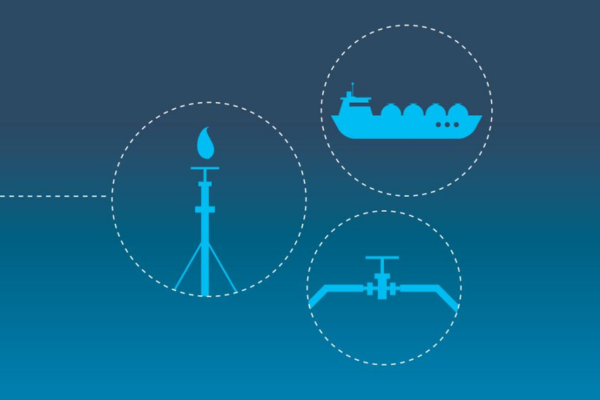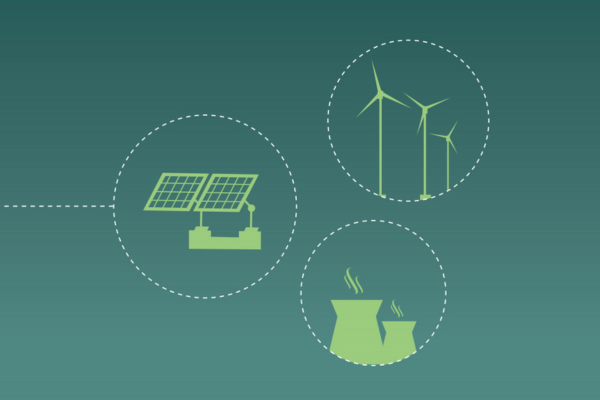Gas and electricity market reports
Energy prices have a significant impact on household expenditures, industrial costs and business competitiveness. In a liberalised market, monitoring market prices has become increasingly important for analysts, policymakers and businesses alike.
The EU quarterly gas and electricity market reports analyse market data in detail to examine trends and challenges. The reports explore the main factors behind price and volume variations and the interaction between market actors.
Every 2 years, a report on energy prices and costs in Europe is published, taking stock of the recent trends for gas, electricity and oil prices, as well as other energy costs.
Gas market - recent developments
The gas market report for the third quarter of 2024 shows that EU gas markets continued the structural changes that started in 2022, in the aftermath of Russia’s invasion of Ukraine. In the July-September period EU gas consumption and imports further declined and have shown signs of stabilisation at significantly lower levels than before the 2022 supply crisis. Demand for gas in power generation further contracted despite higher electrical cooling load during a hotter than usual summer.

Storage levels remained at historic highs and helped mitigate upward price pressures despite growing risks of global supply disruption in an increasingly turbulent geopolitical situation - to which wholesale prices responded with a moderate increase in the first part of the quarter, before resuming to decline in September. Retail prices remained on a decreasing trend year-on-year, but started a slow climb upward compared to the previous quarter. The price discount characterising European gas hubs vis-à-vis Asian markets further widened, attracting LNG cargoes towards Asia and increasing the share of pipeline gas in Europe’s import mix, resulting in a significant decline in LNG imports.
EU gas consumption (56 bcm) declined quarter-on-quarter (-9%) but was almost the same as in the previous year, down 0.3 % (-0.125 bcm), indicating a possible halt in the relentless contraction since 2021. EU gas imports (64 bcm) declined by 8% quarter-on-quarter and by 6% year-on-year. Pipeline gas constituted 67% of imports, while the share of LNG continued to decline to reach 33%. EU pipeline imports (43 bcm) decreased by 4% quarter-on-quarter and increased by 5% year-on-year. EU LNG imports (21 bcm) dropped again by another significant 23% (-6.3 bcm) year-on-year and by 15% (-3.9 bcm) quarter-on-quarter. Norway remained the EU’s biggest gas supplier at 33 % (21.3 bcm) and the most important pipeline supplier at 47% (20 bcm). The United States remained the EU’s biggest LNG supplier (40%). EU storage fullness remained at a record high level (88%). The EU’s 90% storage target was achieved on 19 August, 2 and half months before the 1 November deadline.
The European wholesale gas prices averaged 36 €/MWh in the third quarter, a 7% increase year-on-year. Asian prices were 5 €/MWh (14 %) higher on average than European prices. The quarterly average retail gas price was 103 €/MWh, a 3 % decline year-on-year.
EU quarterly gas market reports
The older reports (2008-2022) are available in a dedicated CIRCA BC
Electricity market - recent developments
The electricity market report for the third quarter of 2024 confirms the continued advancement in renewable power generation: keeping record shares (47%) in the power mix, considerable expansion, particularly in solar power capacities, the further decline in the shares of fossil-based electricity production and a continuing year-on-year decrease of electricity prices in wholesale and retail markets, while demand growth remained moderate.

Solar generation hit a record high, reaching 87 TWh in Q3 2024. Solar and wind yearly generation increased by 11% (+18 TWh). Solar generation rose by 23% (+16 TWh) and offshore wind generation increased by 21% (+2 TWh). Hydropower plants improved their output by 13% (+9 TWh) while onshore wind generation rose by 2% (+1 TWh). Additional installed capacity supported higher levels of renewables generation in the quarter.
Fossil fuel generation hit a historic low at 165 TWh in Q3 2024. Fossil fuel yearly generation dropped by 11% in Q3 2024, supported by sustained renewables generation and moderate demand. In total, coal-fired generation fell by 13% (-9 TWh), and gas generation dropped by 14% (-13 TWh). Nuclear output rose by 8% (+11 TWh) in Q3 2024.
Wholesale and retail electricity prices continued to display a discount on an annual basis. The European Power Benchmark averaged 78 €/MWh in Q3 2024, 8% lower year-on-year, while retail electricity prices for households in EU capital cities were down by 6% year-on-year (241 €/MWh).
EU quarterly electricity market reports
The older reports (2008-2022) are available in a dedicated CIRCA BC.
Energy data centre
Consistent and accurate data is very important for a reliable analysis that can be used to develop energy policies or investment planning.
For data and analysis, the Directorate-General for Energy relies on the Market Observatory for Energy, which maintains and operates the Energy market observation system (EMOS), a database of information collected from a wide range of private and public entities.
Documents
- 1 MARCH 2018
- 1 DECEMBER 2017
- 1 DECEMBER 2017
- 1 OCTOBER 2014
